A picnic in the mountains, a trip to the beer garden or exploring glacial lakes on a summer’s day? It has never been easier to go on an adventure – all thanks to the growing sector of full-suspension off-road step-through bikes. Superior to trekking bikes in many ways, they promise more comfort, safety and fun. We’ve tested four bikes for you!
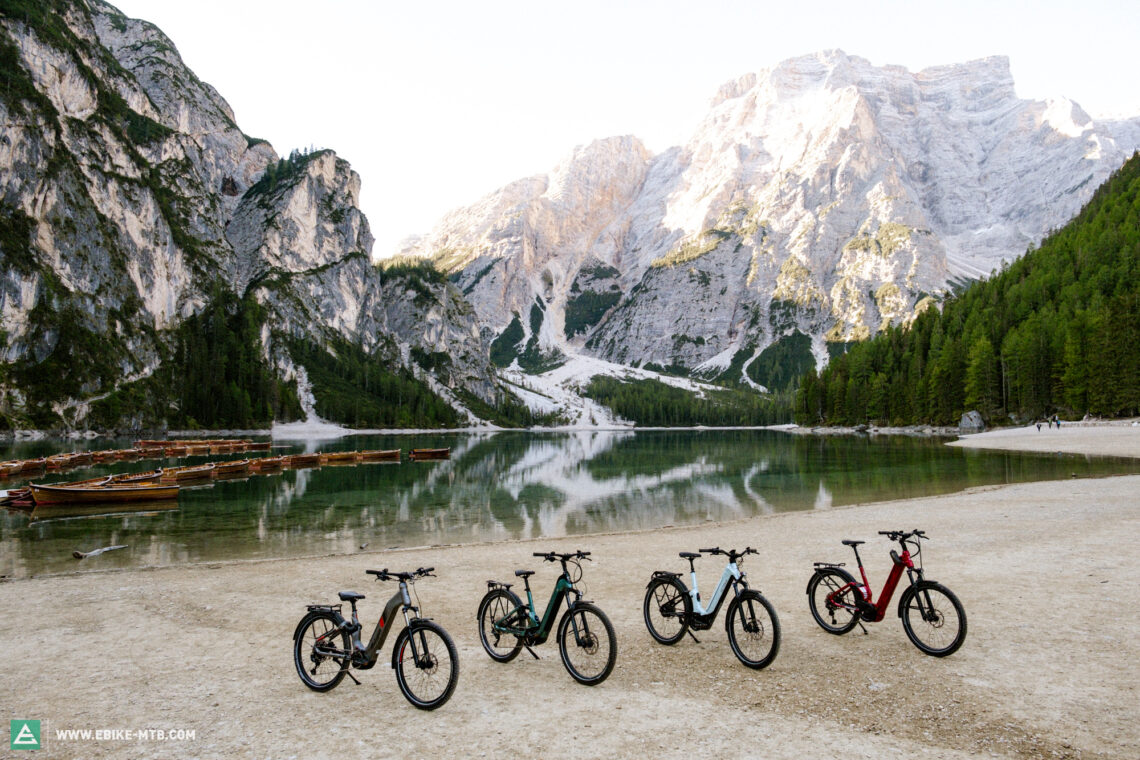
- The next generation of full-suspension off-road step-through bikes
- Why ride a step-through bike and not a trekking bike with a classic diamond frame?
- What is a must-have in the “off-road package” for an off-road step-through bike?
- Which motor system is the best for a full-suspension off-road step-through bike?
- Stretch bench or garden swing – The ergonomics and adjustability of our off-road step-through test bikes
- Form follows function – The design of our off-road step-through bikes
- Equipment ≠ Equipment – Large differences in the functionality of the features
- Tops & Flops
- The test field at a glance – Winners, losers and recommendations
All bikes in test: CONWAY CAIRON SUV FS 5.7 | Malaguti Collina FW6.0 | Victoria Parcours 5 | ZEMO SU-E FS11
A real revolution is currently taking place in the bike world, making biking more accessible and changing people’s perceptions: We’re talking about full-suspension off-road step-through bikes. These bikes come without a top tube, which makes mounting and dismounting much easier – they don’t require you to lift your leg high, you just, well, step through the frame. Not only are they a game changer for older and less agile bikers but also for everyone who is looking for a reliable companion for commuting safely through the city, or for a relaxed bike ride in the great outdoors. This is where the off-road aspect comes into its own. Thanks to sensible features and a clever frame design, the step-through bikes are clearly superior to classic trekking ebikes and old-fashioned city bikes in terms of comfort and safety, bringing young and old together. As early as 2020, we recognised the potential of off-road step-through bikes and invited 10 promising candidates to our big comparison test. Already back then we had the vision of an inclusive means of transport. In the words of Dr Martin Luther Biking Jr: „I have a dream that one day, everyone will be able to bike together” ;). In the meantime, technology has taken another significant step forward. In the first edition of our comparison test, only one out of ten ebikes had a full-suspension frame. However, manufacturers have recognised the potential, and the market for full-suspension step-through bikes is growing significantly.



The next generation of full-suspension off-road step-through bikes
What defines the latest generation of off-road step-through bikes? They are ingenious bikes made for adventure and exploring while raising comfort, safety and off-road capability to a new, even higher level. The full-suspension chassis is the core element. Off-road step-through bikes not only have a suspension fork at the front but also a suspended rear triangle. You notice the benefits already on rough asphalt, and even more so on cobblestones or off-road. Suspension rear ends are commonplace on mountain bikes, but on step-through bikes they are a feat of engineering and require a cleverly thought-out design. Our test shows that not all models meet this criterion. The frame function is usually designed differently for mountain bikes and step-through bikes. While mountain bikes are made to absorb fast, successive impacts while still providing good feedback from the ground, step-through bikes are designed to dampen only isolated impacts, as from kerbs or potholes. Their primary aim is to provide comfort and safety rather than speed. Obviously, some of the step-through bikes we tested are great fun on flowing trails, too, but that’s not what they were originally made for.
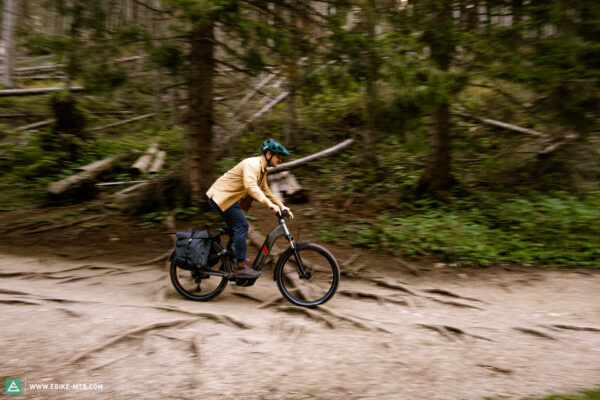

While cobblestone roads or kerbs can become the ultimate comfort killer on many trekking hardtails, a well-designed rear suspension absorbs most impacts, increasing not only the comfort and safety but also the traction. Thanks to the full suspension, the rear wheel hugs the ground even on bumpy and unpaved roads, ensuring a smoother ride and shorter braking times. Newbies even feel encouraged to test out the many possibilities of the off-road step-through bikes exploring more adventurous trails. To experience the riding characteristics of the still relatively new ebike type for ourselves, we set off for the picturesque municipality of Olang in South Tyrol to do the testing where others spend their holidays. This community of 3,200 people is located in the heart of the Fanes-Sennes-Braies Nature Park and offers us the ideal testing conditions for our workation trip. The centre of Olang lies at 1,080 m above sea level – pure mountain village idyll! You can gain many vertical metres on numerous trails around the Olang-Valdaora valley, rewarding yourself with a stop at one of the numerous alpine huts that are still kept in the traditional way. A visit to the regional glacial lake, Lago di Braies, is a must on any bucket list. In the summer months, however, access by car is limited, which is why exploring the region on an off-road step-through bike is perfect.
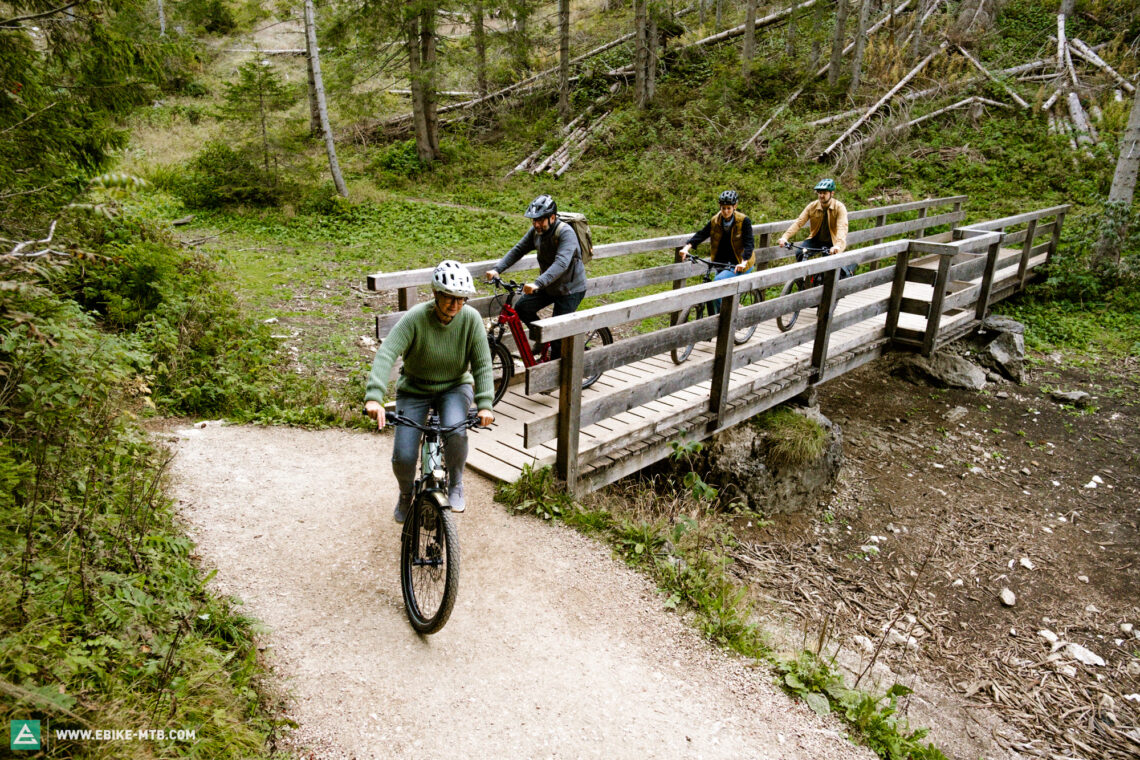
Why ride a step-through bike and not a trekking bike with a classic diamond frame?
Step-through bikes are often regarded as ladies bikes, but a well-designed ebike with a low entry offers advantages for many target groups. Especially with bulky panniers, it takes Jean-Claude Van Damme’s Epic Split to swing your leg over the fully-loaded rear of a trekking bike. Step-through bikes also offer a special advantage in tricky riding situations, particularly for beginners who try to put their feet on the ground as quickly as possible in dangerous situations. On classic diamond frames the top tube hinders them in doing so, which affects their confidence and sense of safety. Bike manufacturers have realised that this does not only affect ladies with long skirts, and have therefore started to advertise their step-through bikes more as wave frames instead of women’s bikes. However, there are also some disadvantages that cannot be dismissed. Technically, step-through bikes are not easy to implement, as it is the top tube that gives ebikes a lot of frame rigidity. Without a top tube, the rest of the frame has to be reinforced, which often results in a slightly increased weight. Our test bikes all weigh between 28 and 31 kg. A really light off-road step-through bike is hard to find, as unless the frame is reinforced at the critical points, the handling will be unstable. The handlebar on some of the models we tested tended to wobble, especially with heavy loads on the rear rack. But then again, many classic step-through bikes without rear suspension suffer from this phenomenon too.
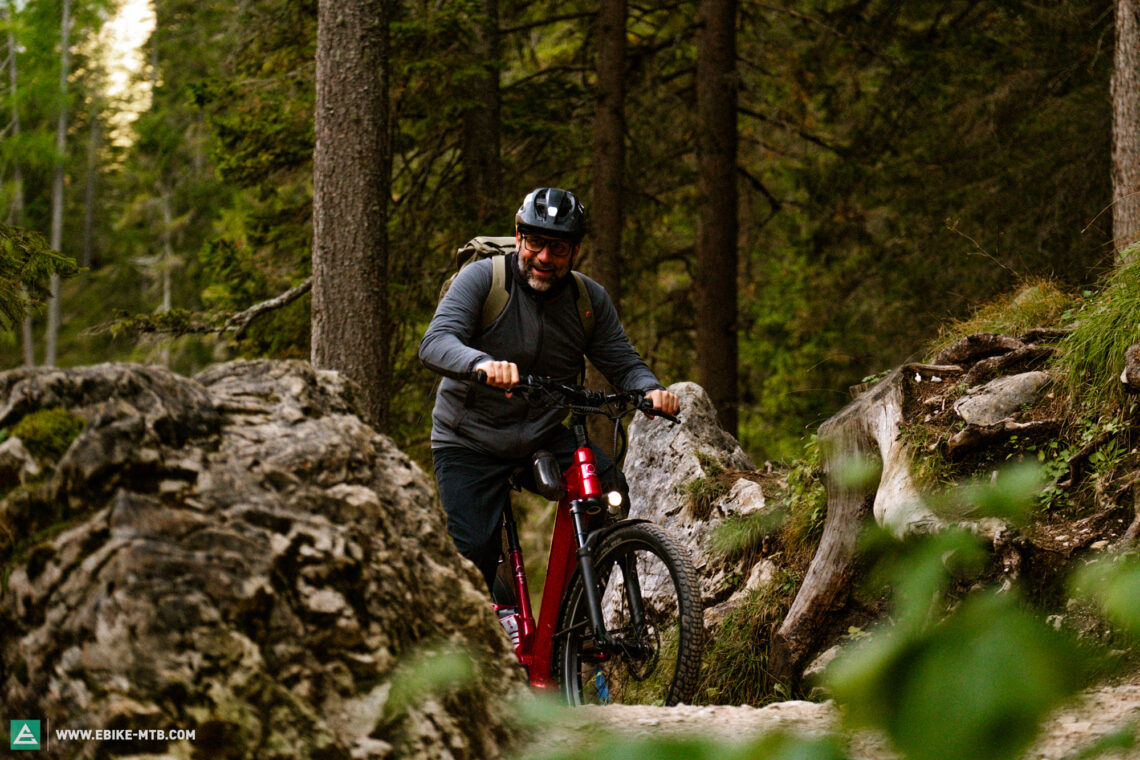
What is a must-have in the “off-road package” for an off-road step-through bike?
Not every bike with a low entry immediately qualifies as a comfortable off-road step-through bike. Besides geometry and chassis, other factors have to be considered as well.
Tires: Voluminous knobby tires ensure riding comfort due to their cushioning properties. A chunkier tread adds safety by providing a good grip on gravel roads and forest paths. All manufacturers in the test went with the Schwalbe SUV tire lineup. The Johnny Watts model is used by three manufacturers and one chose the Schwalbe Al Grounder with a lower tread. The team from ZEMO equip the SU-E FS 11 with 2.6″ tires, the other manufacturers use the narrower but still quite bulky 2.35″ ones.

Brakes:The same applies to the brakes as to the tires, they must be suited for the area of use. Off-road step-through bikes are made for exploration and therefore need to come to a halt safely and in a controlled manner, even in a mountainous area or with a heavy load. To ensure this, the brakes must be suitably fade resistant and well dimensioned. Compared to two-piston brakes, four-piston stoppers generate more braking power with lower operating forces, which means that your hands, fingers and forearms do not tire as quickly on long rides or downhill. Large brake discs also provide better performance during sustained braking. Due to their larger radius, they also require less pressure on the brake lever. Another benefit is that larger discs ensure better heat absorption and dissipation and therefore a more constant braking force without overheating too quickly. Unfortunately, this concept has not yet reached all manufacturers. On our test bikes, only CONWAY and Victoria use a large front brake disc, and the ZEMO was the only model equipped with a four-piston brake on the front wheel.

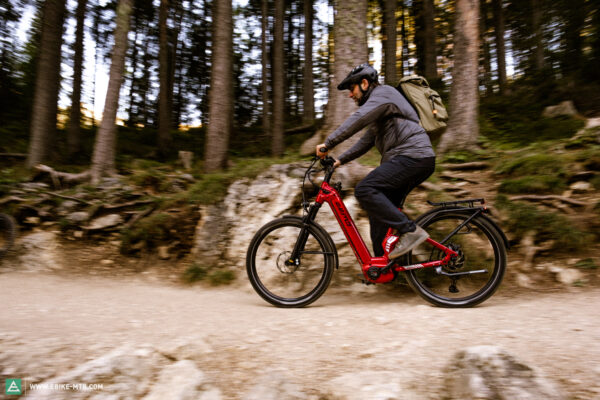
Dropper post: Another item on the checklist is a dropper post. While it was still considered a highlight in our 2020 comparison test and was only used on three out of ten ebikes, the feature is now a must-have. Not only does it make it easier to get your feet on the ground when stopping at a traffic light, but it also gives you more freedom of movement when riding in rougher terrain. In our current comparison test, we rode seatposts with a stroke of a measly 75 mm up to a stately 160 mm. Dropper posts with a lot of travel also require a correspondingly long insertion depth in the seat tube, which, however, is limited by the shock on full-suspension step-through bikes. That’s why long-stroke droppers are not easy to accommodate.

Which motor system is the best for a full-suspension off-road step-through bike?
Anyone who has read our motor test knows that this is a trick question. There is, of course, no such thing as “the best motor system”, as it is only as good as the overall concept of the bike in question. A good motor does not make a bad bike ride well. All our test bikes use the Bosch Performance Line CX motor with identical performance numbers and almost the same hardware. It’s also the motor of choice for many performance-oriented eMTB models. However, how well the CX motor supports the bike depends on several factors, including the type of drivetrain, tires and geometry. While the Enviolo gear hub in the Victoria PARCOURS 5 only has a limited range, lacks a light climbing gear for steep climbs and sometimes slips under heavy workloads, the test bikes with chain drivetrains are unfazed even with a great deal of pressure on the pedals.
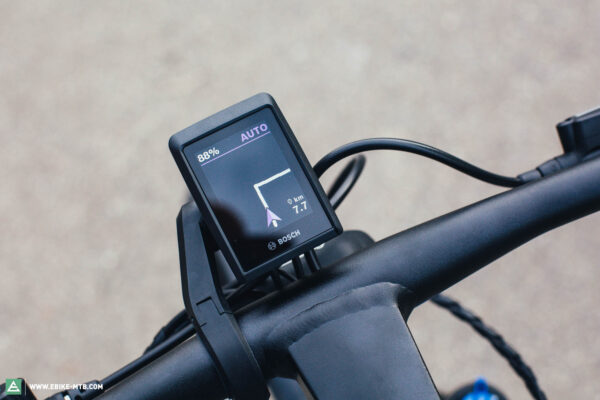
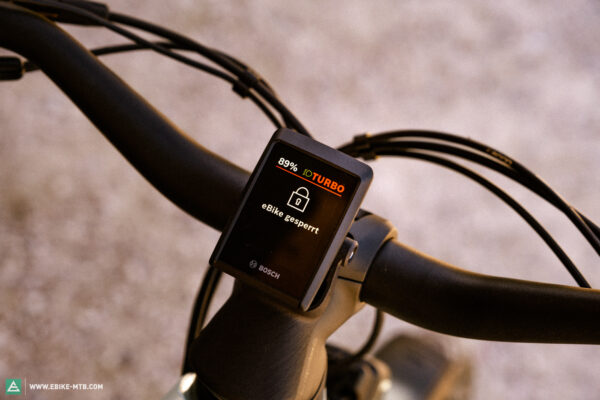
And while there is little variation in the motor itself in our test, there are clear differences in the motor system and the integration of the Bosch systems. Victoria and ZEMO rely on the new Bosch Smart System, Malaguti and CONWAY still manage with the “older” Bosch motor generation, which has both its pros and cons. Victoria and ZEMO benefit from modern connectivity features such as the eBike Lock, using the smartphone as a digital key, the rudimentary navigation function on the Kiox 300 display or the compatibility with the SmartphoneGrip mount. Malaguti and CONWAY owners, on the other hand, can upgrade their ebikes at a Bosch dealer to the first-class Bosch Nyon display, which combines real offline navigation with battery and motor data on the handlebar. Those who prefer to order these two off-road ebikes with the new Bosch Smart System will have to wait for the model change in 2023.
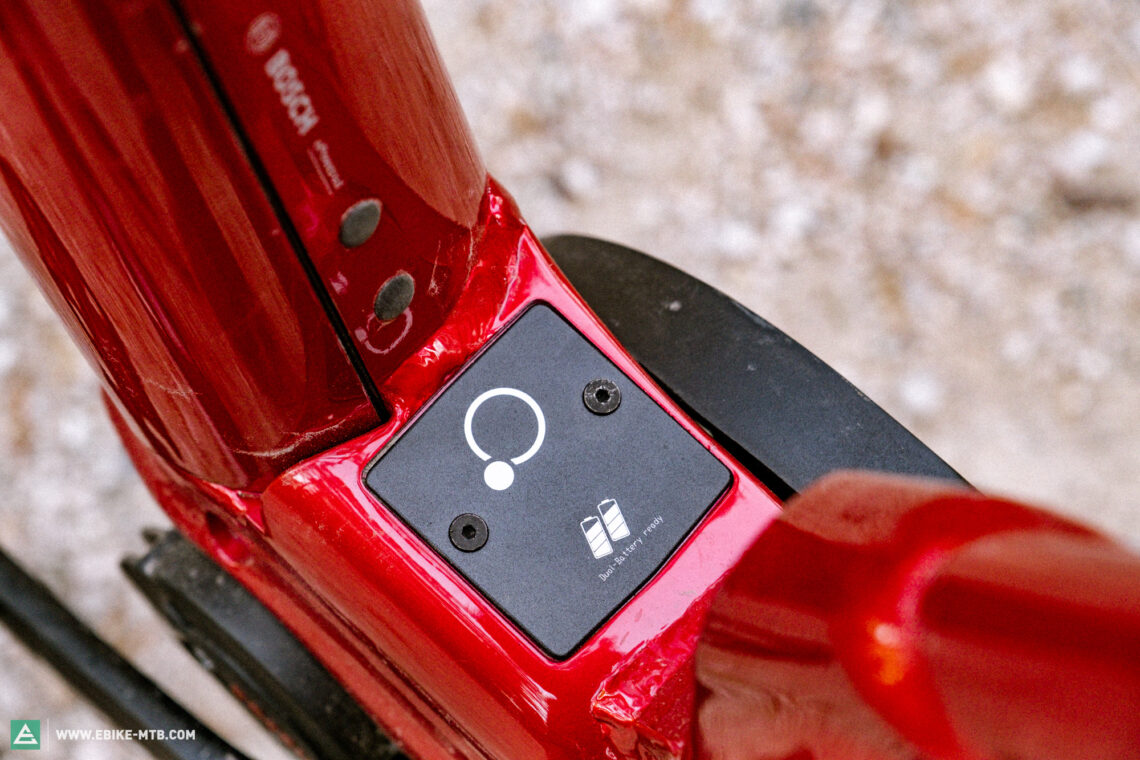
When it comes to batteries, there is one that stands out in the comparison test. If you like to put in some extra laps on your weekend tour, you’ll be excited about the ZEMO’s large 750 Wh battery and the fact that it is already prepared for a dual-battery option. So as soon as Bosch brings the second battery to the market, it can be attached to the down tube of the ZEMO SU-E via an additional holder. CONWAY, Malaguti and Victoria rely on a fully-integrated Bosch battery with 625 Wh capacity, which also has its advantages, as a shorter battery allows smaller frame sizes. The CONWAY CAIRON SUV, for example, is significantly more compact in size S than the smallest ZEMO, making it a great option for very small people and for saving on extra ballast.
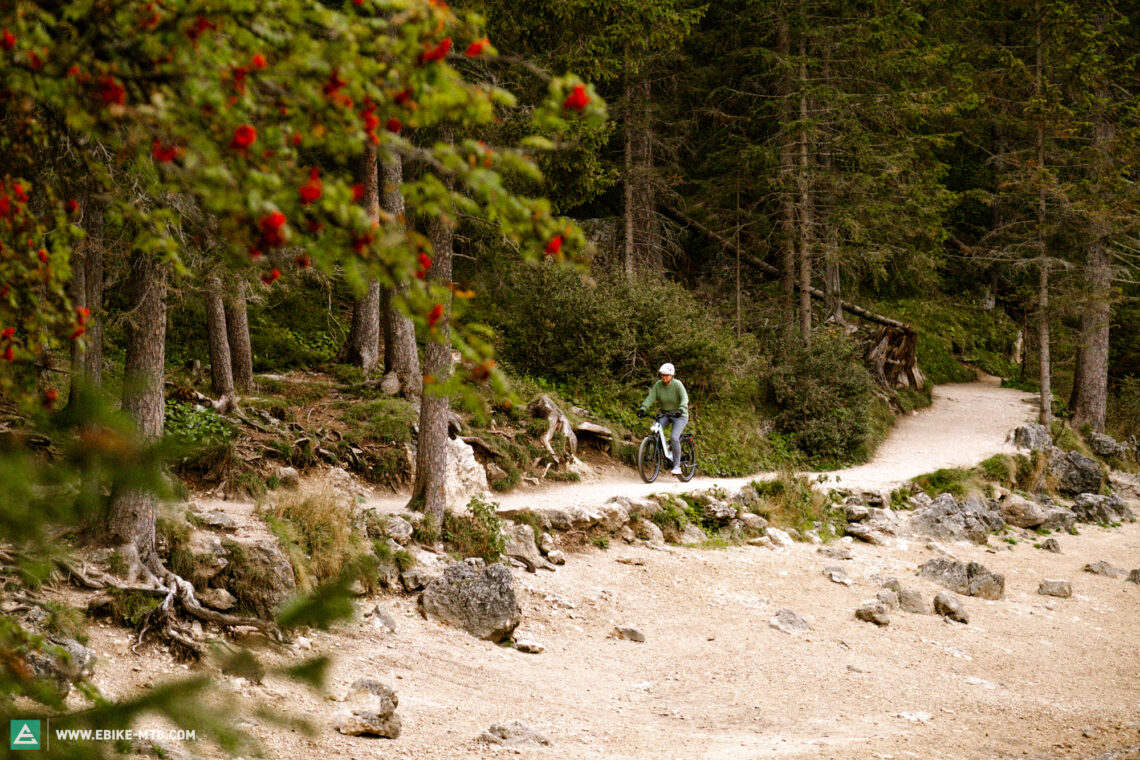
Stretch bench or garden swing – The ergonomics and adjustability of our off-road step-through test bikes
Even the best off-road step-through bike is no fun if the ergonomics just aren’t right. The more user-friendly settings an ebike offers for adjusting the ergonomics and seating position, the better. Once you’ve got yourself a stylish off-road step-through bike, you’ll quickly draw admiring glances from family members who also want to take it out for a spin. If two or more people share an ebike, it is an obvious advantage if it can be easily adapted to different body sizes. Here we see many different approaches. CONWAY and ZEMO address this issue with adjustable stems, for example. This allows the handlebar position to be adjusted in width and height by simply loosening and tightening a bolt, no need for major fiddling around. The Victoria is equipped with a stylish stem that doesn’t offer any adjustment options, however, the bike has a handlebar with plenty of rise. Rotating the handlebar in the stem, the seating position can be straightened or flattened to a certain degree. In typical MTB fashion, Malaguti use a flat bar with a stub stem that can be slightly raised or lowered with spacers. At 760 mm, the handlebar is significantly wider than on the competitors’ bikes and forced the test riders into a broad push-up-like arm position. People who don’t have the arm span of a Michael Jordan or a swimmer’s chest will have to reach for the hacksaw and shorten the handlebar to find the right position.
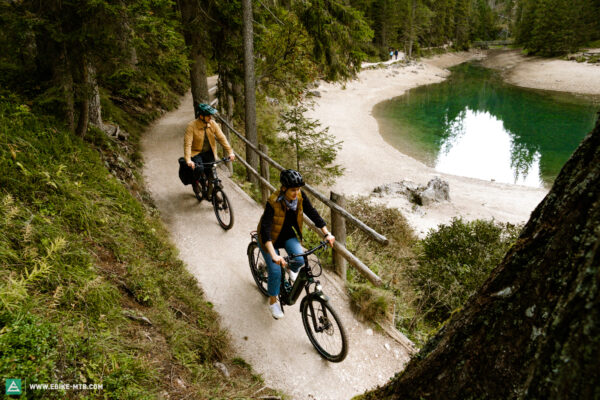

When it comes to saddle height, all manufacturers in the test have shown their expertise. Thanks to the dropper post, the test bikes can be adapted with a quick flick of the remote on the handlebar, making it particularly easy to change riders. The CONWAY CAIRON also allows another tool-free adjustment of the saddle height via a quick-release on the seat tube. The principle here is: One size does not fit all – but many. Ideally, several riders can share one bike.
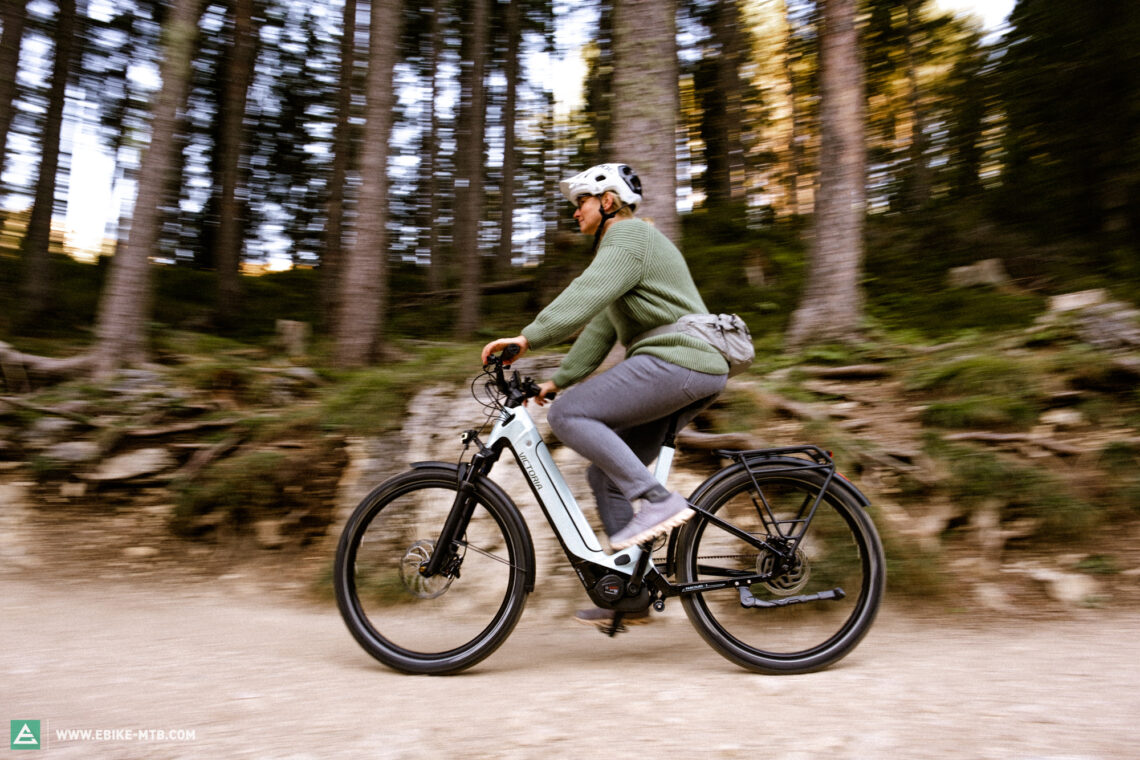
To ensure that not only the ergonomics but also the riding comfort is right, the pressure in tires and suspension must also be adjusted to the rider’s weight and riding style. For the SR Suntour and RockShox forks in the test field, the manufacturer’s specifications can be found online and used as a good starting point for a suspension setup. When it comes to the right tire pressure, it takes a bit of trial and error. Especially the 2.6″ wide tires of the ZEMO can be a little too hard and bouncy if the pressure is too high. The setup of the rear shock is a little more difficult, as you have to find the sweet spot. If the pressure is too high, the rear end feels too firm, but if the pressure is too low, it sags too much in the suspension travel. On some of our test bikes, however, the shock air valve is obstructed by the frame and difficult to reach. On others, it is hard to check the suspension sag, as the access to the rear shock is partially covered by the frame. If you need help, you should ask the dealer directly for assistance when buying the bike.
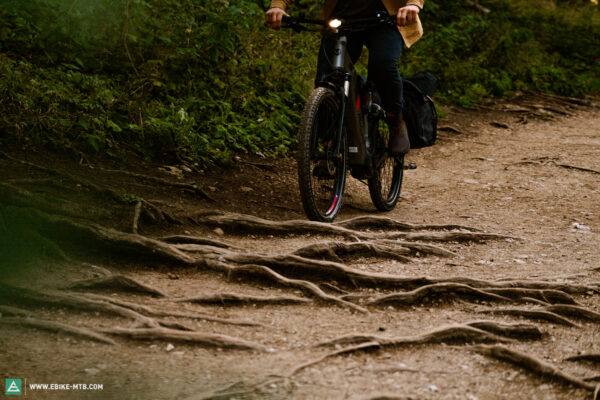

Form follows function – The design of our off-road step-through bikes
Step-through bikes are sexy! While exploring the Lago di Braies during our test laps, we attracted more attention than the mountain lake scenery itself, despite the fact that #lagodibraies delivers over 450,000 hits on Instagram. The design on some of the test bikes has clearly been given considerably more thought than on others. The integration of the shock in the rear triangle particularly shows the different design approaches. While the rear shock on the Victoria is almost completely integrated into the frame and the rear triangle kinematics can only partially be glimpsed, the CONWAY shows off its shock with the iconic shock linkage reminding us of the Specialized Demo downhill bike rear triangle.

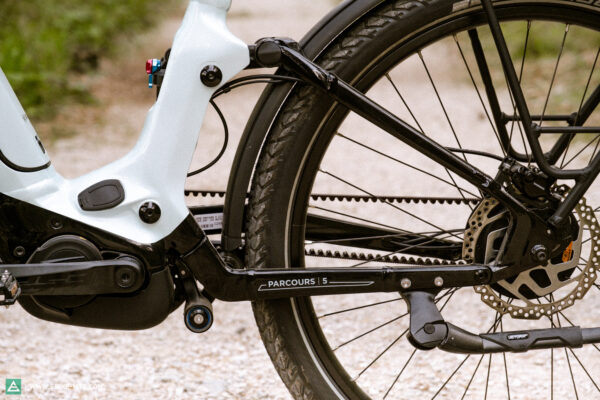
The elaborate integration of the motor into the frame as well as the paintwork with its bright and well-matched colours are in the same league as expensive eMTBs. Yet the sometimes very rough weld seams or the chaotic cable management in front of the cockpit still show potential for improvement on all the test bikes.
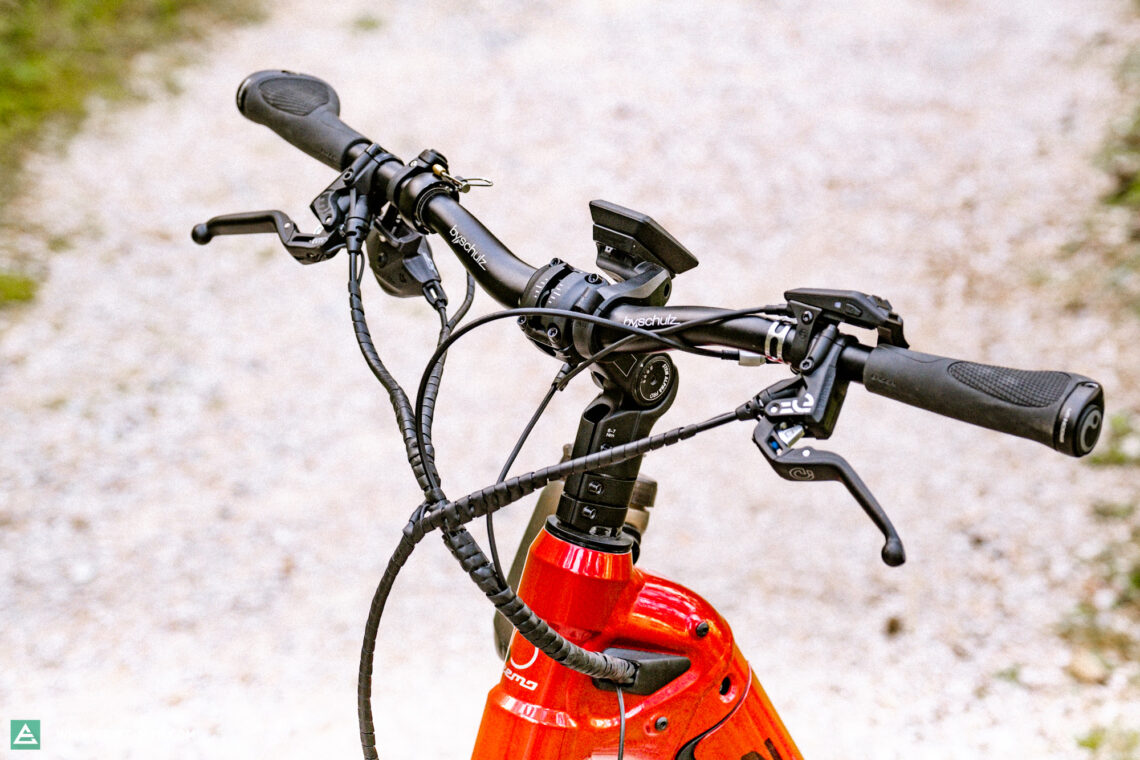
Equipment ≠ Equipment – Large differences in the functionality of the features
All bikes on test come fully equipped with a lighting system, mudguard, kickstand and a rear rack. Just as useful in everyday life as on the trail. Regarding the quality and functionality of the attached parts, however, the test reveals major differences. While some features are a real bonus on certain bikes, they make life significantly more difficult on others. For example, wide, firmly-mounted aluminium mudguards protect against splashing water and provide peace and quiet on rough trails, while poorly mounted mudguards scraped the tire and tested our patience during the test.
With the front light, it’s not only the brightness that counts but also the positioning. The Malaguti is the only test bike that has its lamp positioned at the top of the handlebar, which improves visibility by preventing the front wheel from casting a shadow in front of the bike. On the other test bikes, the front light was installed low on the crown of the suspension fork.
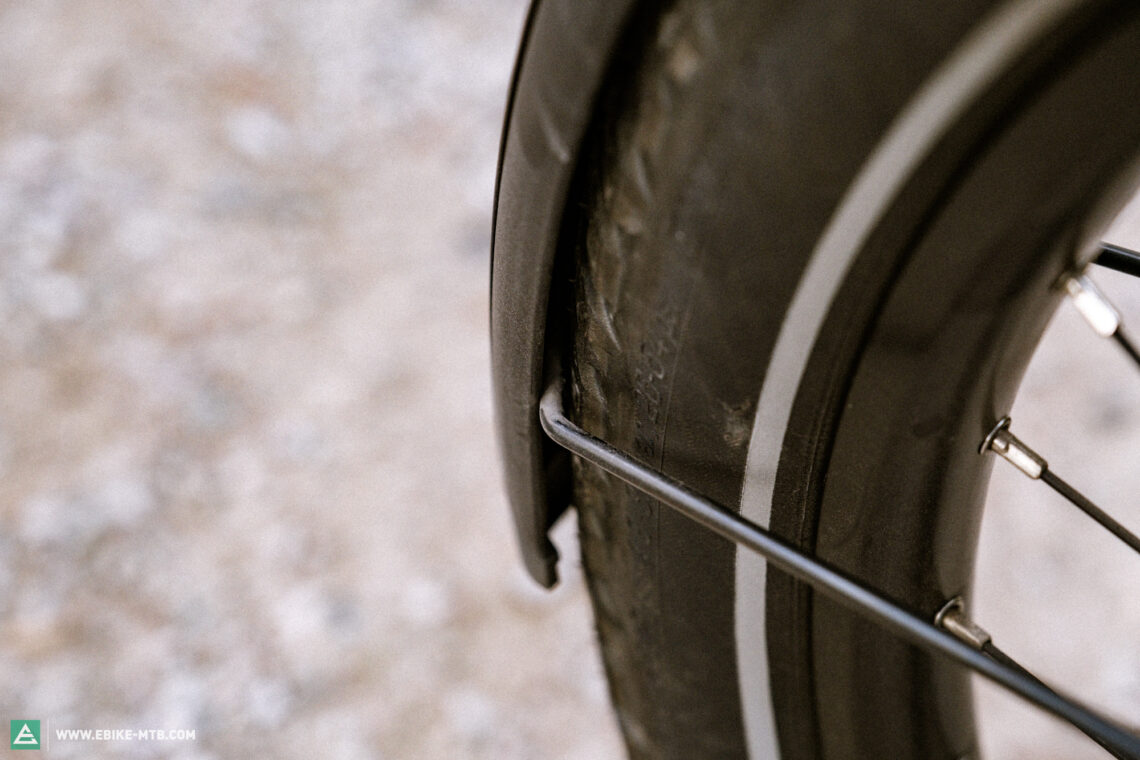
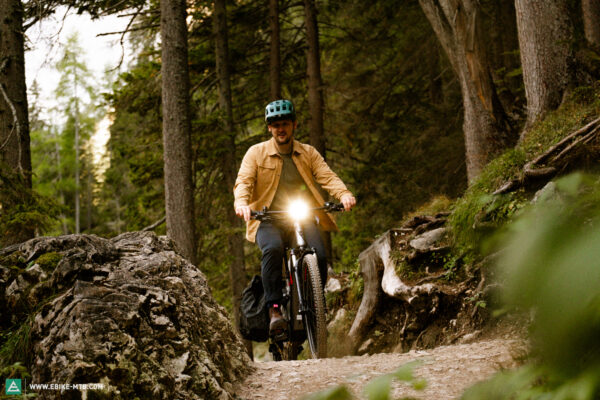
The ZEMO, the Victoria and the CONWAY score extra points with a brake light function, drawing attention to the bike in the hectic after-work traffic of a big city. The ZEMO is the only bike with an additional practical high beam function.
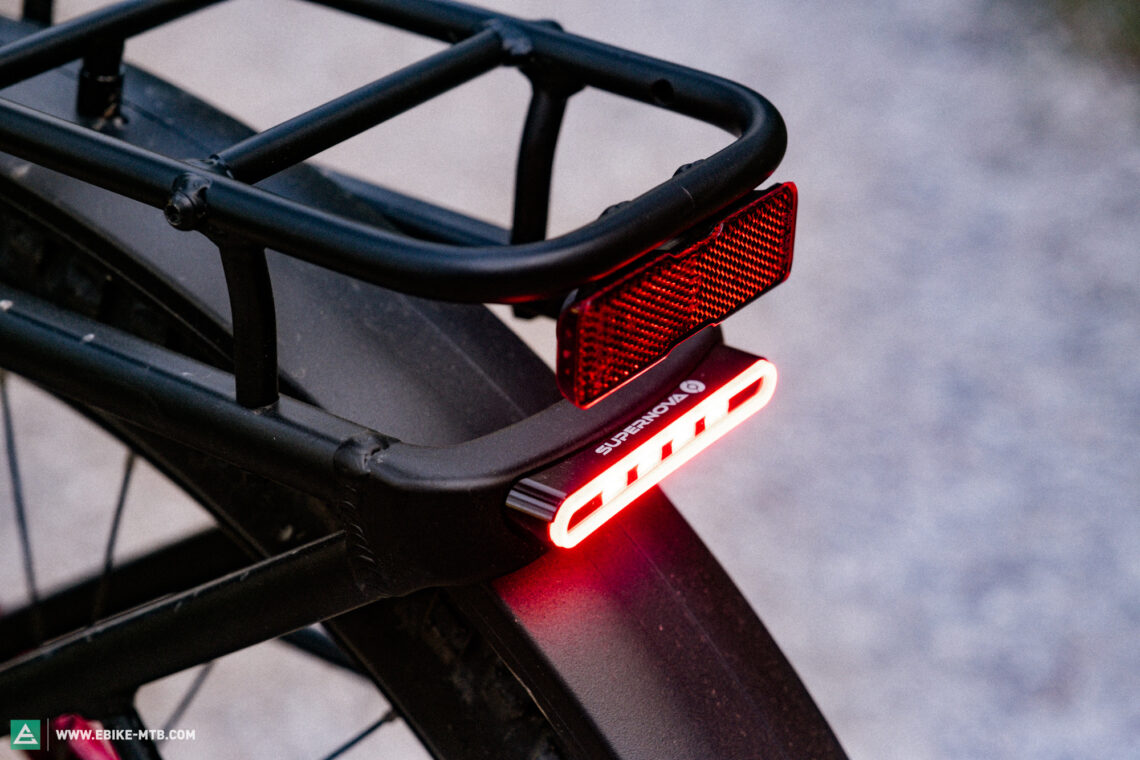
Nobody likes to ride with a heavy backpack on their back, so a rear rack is a must-have for tours with luggage. Whether for daily shopping or on a multi-day tour, the panniers should be as easy as possible to attach and remove. A standardised luggage rack system has not yet been established in the industry. Available for our test bikes are pre-mounted bag holders such as the MIK system, AVS, Ortlieb Quick-Lock 3 and MonkeyLoad. In contrast to third-party pannier bags, these ones can be attached easily even when fully loaded, but the additional weight at the rear can have a hugely negative impact on the handling. Some step-through models such as the Victoria or the Malaguti start to sway due to the load at the rear and respond with a wobbly handlebar. The CONWAY, on the other hand, remains very stable even when fully loaded. Nevertheless, you should think twice about whether you want to carry all seven Harry Potter volumes with you at all times.
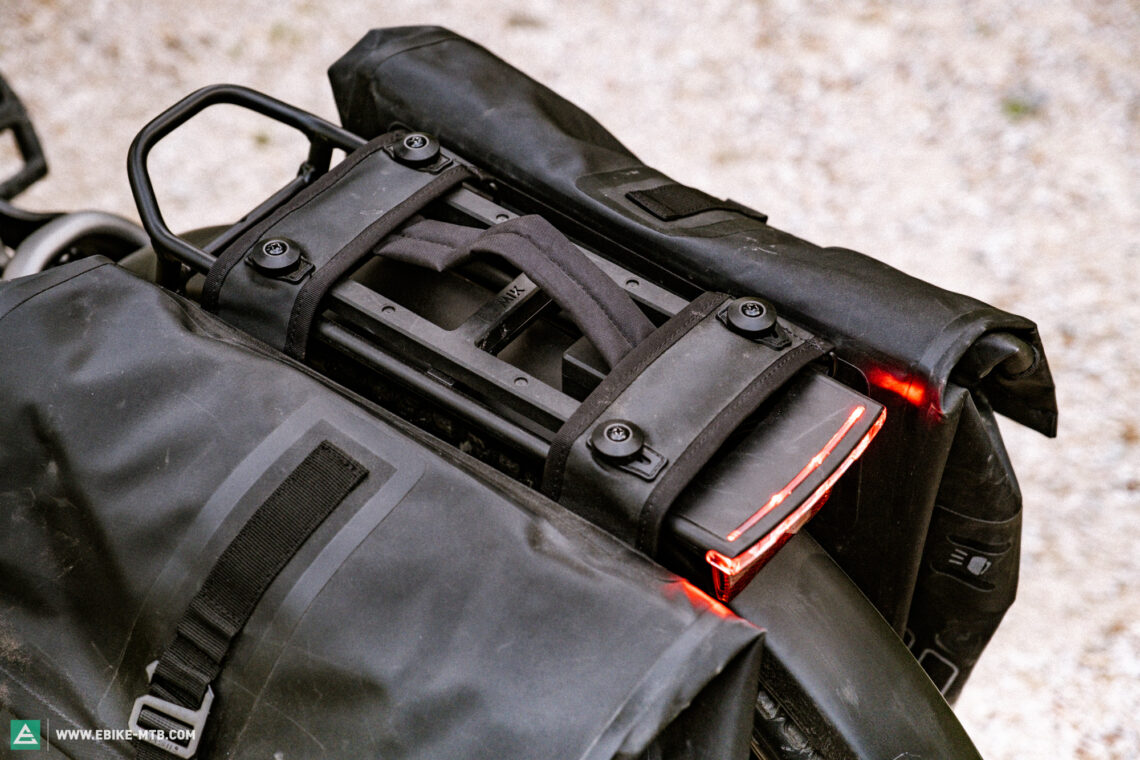
Another attachment that can cause problems on step-through bikes is the water bottle. Its placement in the lower area of the step-through frame means that you have to lift your leg much higher than normally when getting on and off the bike. Malaguti and Victoria do not have a bottle cage at all, while on the CONWAY the mount on the seat tube is rather suboptimal and somewhat blocks the entry. The ZEMO comes with a practical bottle cage next to the head tube, but even this placement can lead to restricted movement while pedalling.

Tops & Flops
Without light, there’s no shadow: In our test, we encountered many clever and practical solutions along with well-implemented details. But among the many highlights there are also a few letdowns that left us scratching our heads. Here are the tops and flops of our comparison test.
Tops
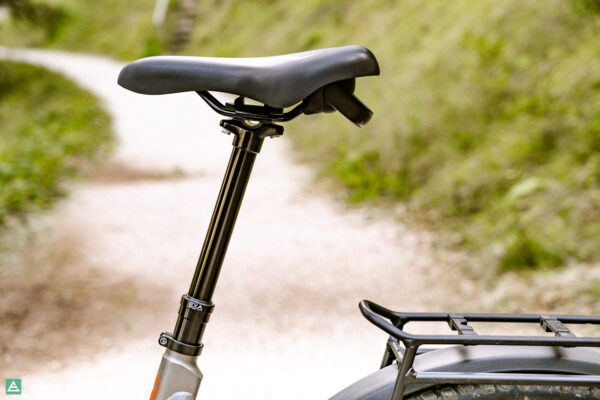
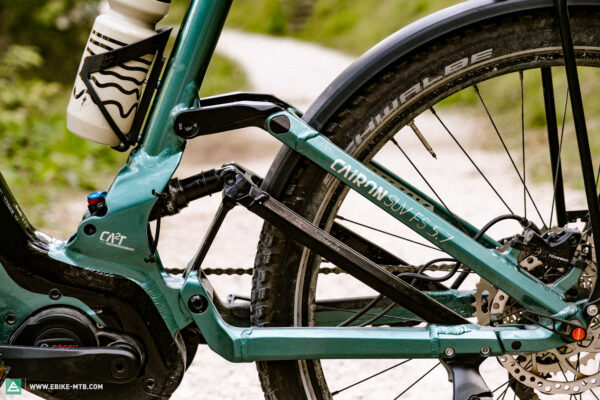
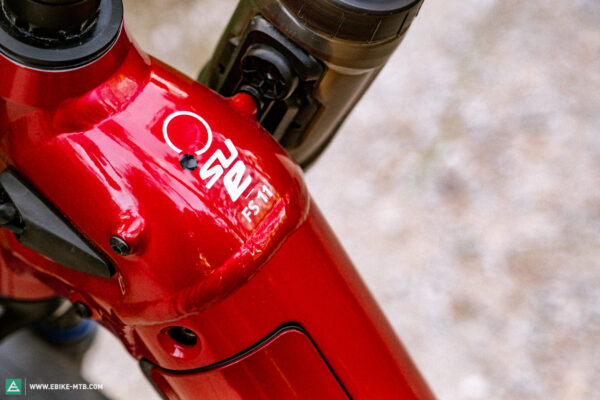
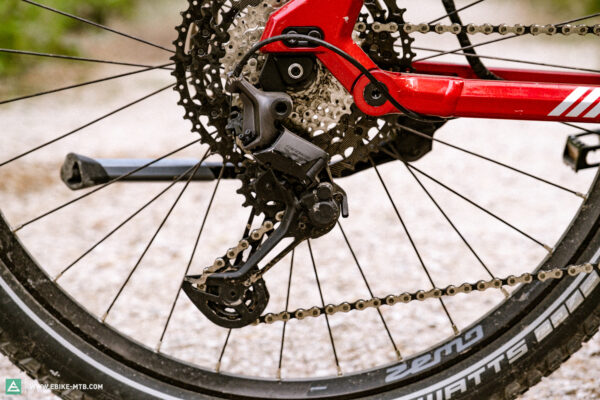
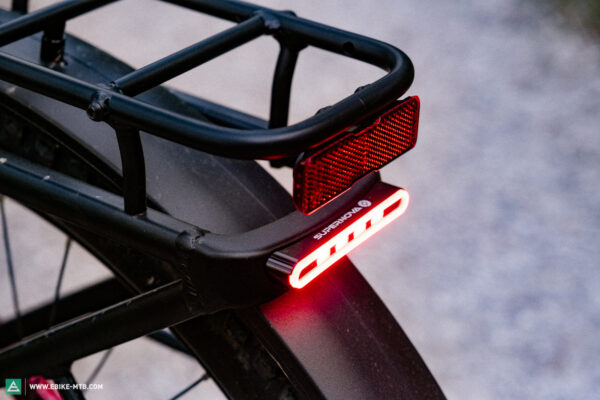




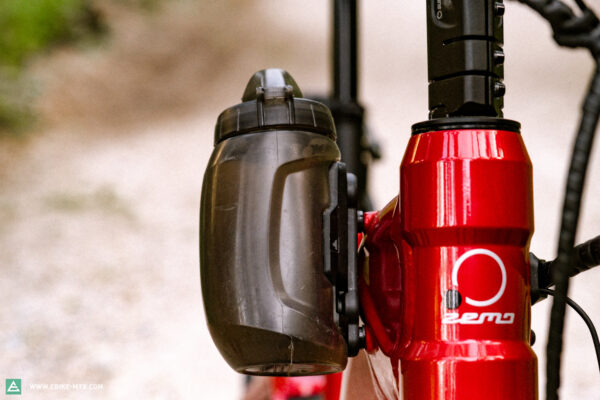
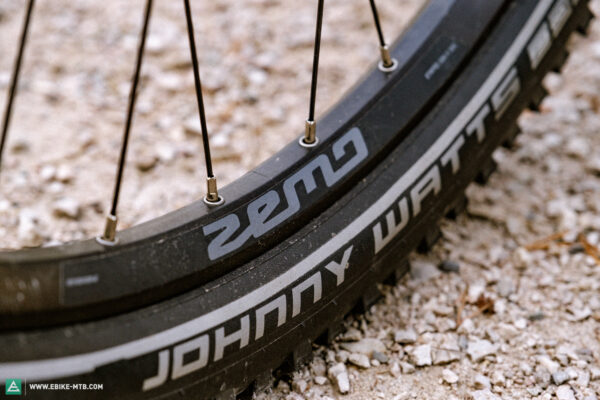
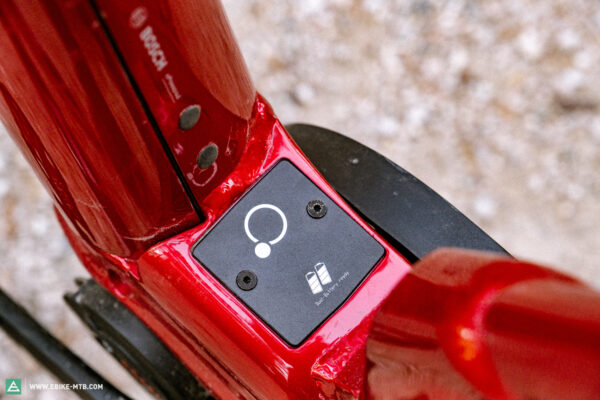

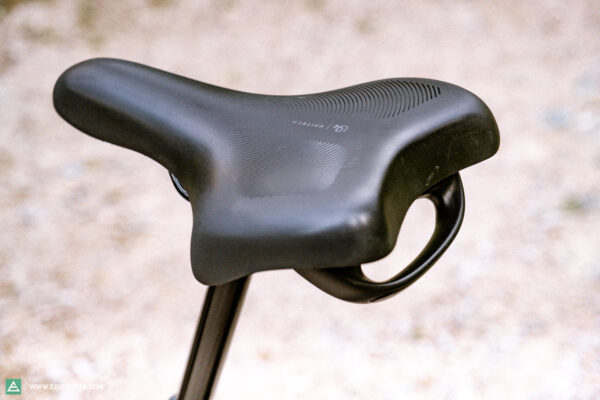

Flops
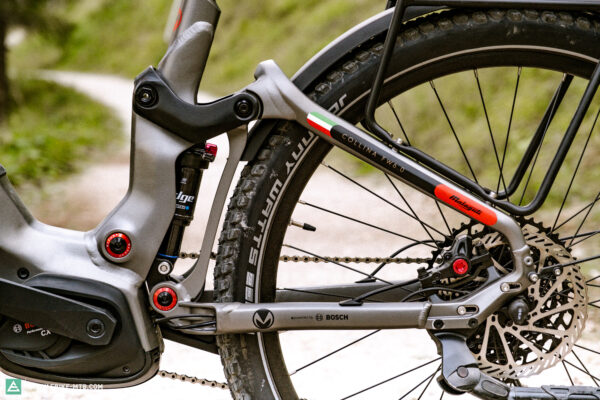
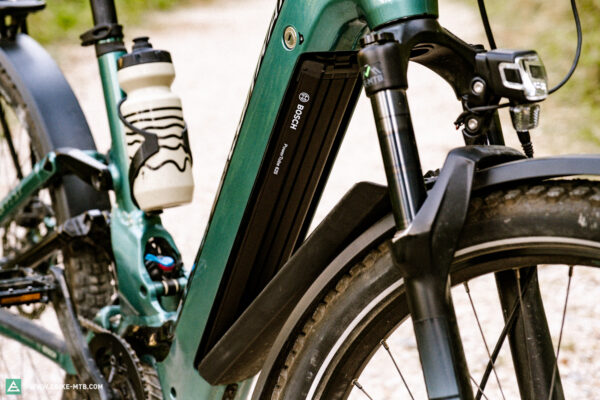


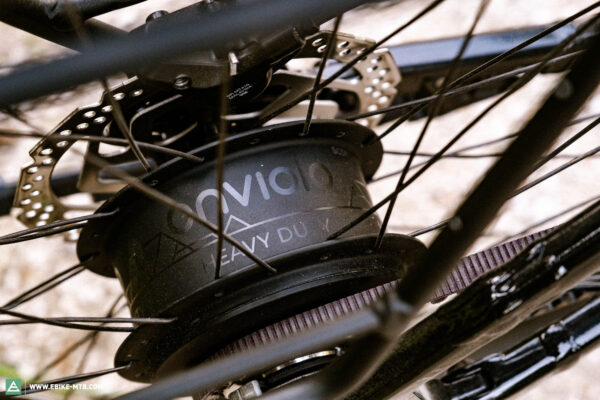


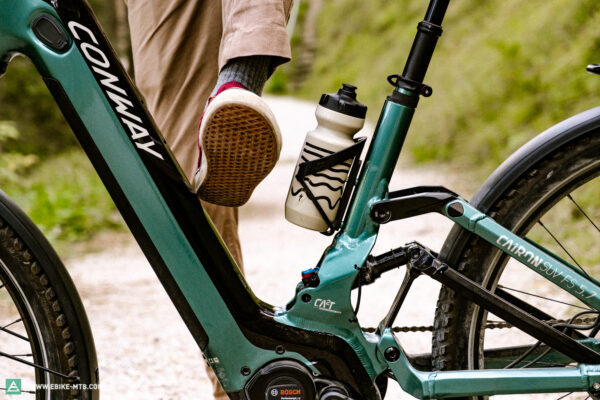

The test field at a glance – Winners, losers and recommendations
A good off-road step-through bike is a real source of joy, but only if the overall package is right. With the right balance of comfort, riding safety and handling, the bikes enable young and old alike to enjoy relaxed outdoor explorations, and for some they might even open up completely new horizons. Our hand-picked selection of four full-suspension off-road step-through bikes shows the potential of the concept and what the future of trekking bikes could look like.
Our best in test – ZEMO SU-E FS 11
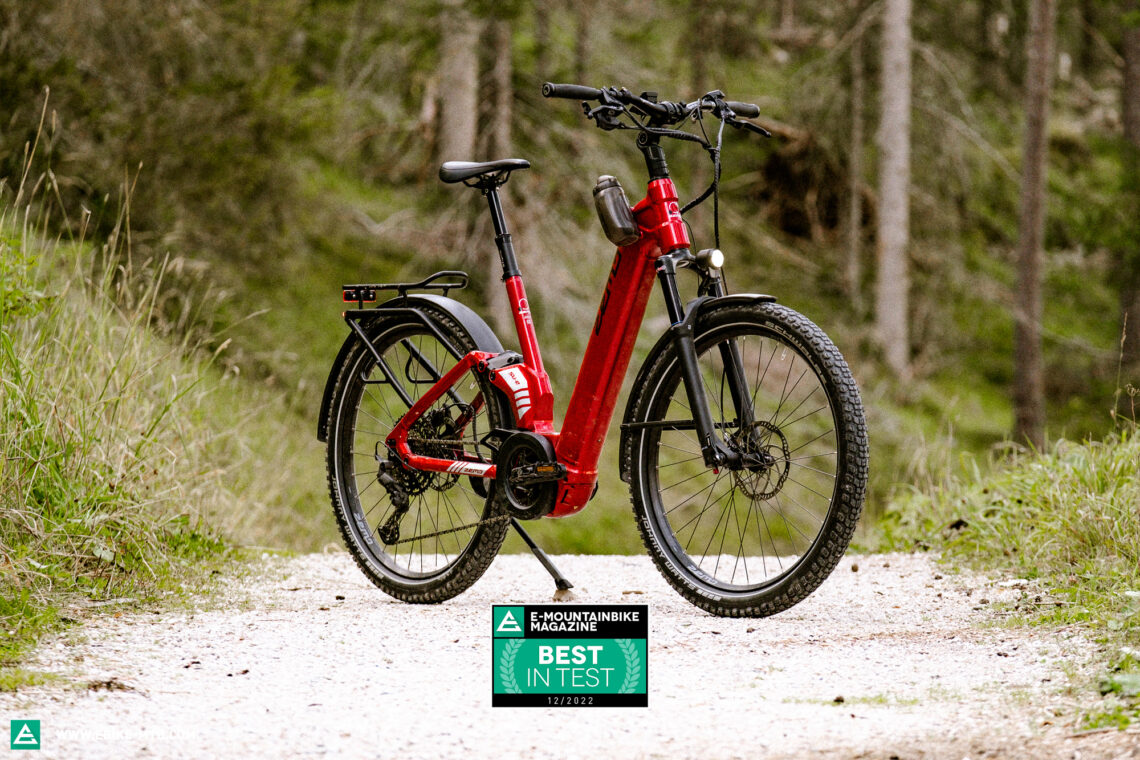
The ZEMO SU-E FS 11 is the deluxe model among the off-road step-through bikes. The ZEMO team has not only equipped the ebike with all comfort features such as a well-functioning rear triangle or a suspension seat post, but has also provided a comprehensive safety package with many detailed solutions. Thanks to the successful motor integration around the Bosch Smart System and the preparation for a dual battery, ZEMO give you everything that the concept of off-road low step-through bikes currently has to offer.
The ZEMO pays for its high level of functionality with a somewhat overloaded look and a rather incoherent design. Nevertheless, it is deservedly the winner of our off-road low step-through bike comparison test.
Our best buy – CONWAY CAIRON SUV FS 5.7
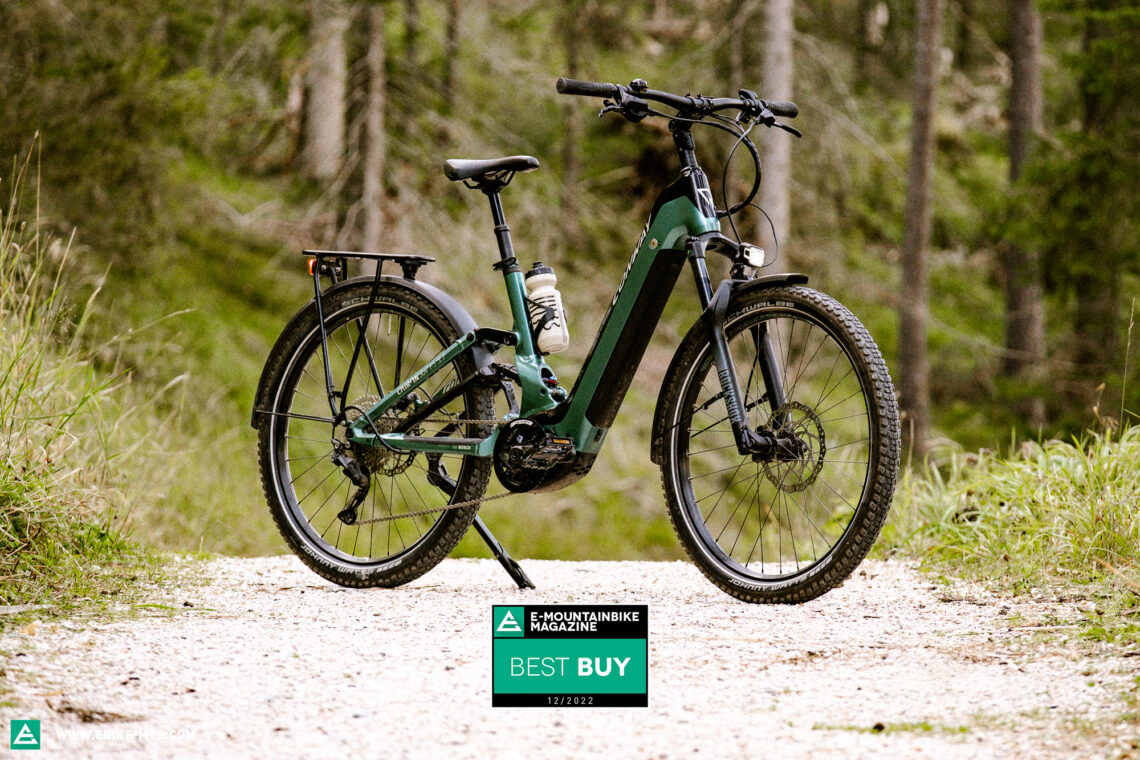
The CONWAY CAIRON SUV FS 5.7 off-road step-through bike is all about the powerful frame and the elaborately designed rear-end kinematics. No other step-through bike in our comparison test can match the ride comfort and stability of the CONWAY. With the main focus being on off-road performance, other aspects such as connectivity, suitability for everyday use or design were rather neglected. Nevertheless, at a comparatively attractive price the CONWAY shows no significant shortcomings in the test. That’s why the CONWAY CAIRON SUV FS 5.7 gets our best buy recommendation.
Malaguti COLLINA FW6.0
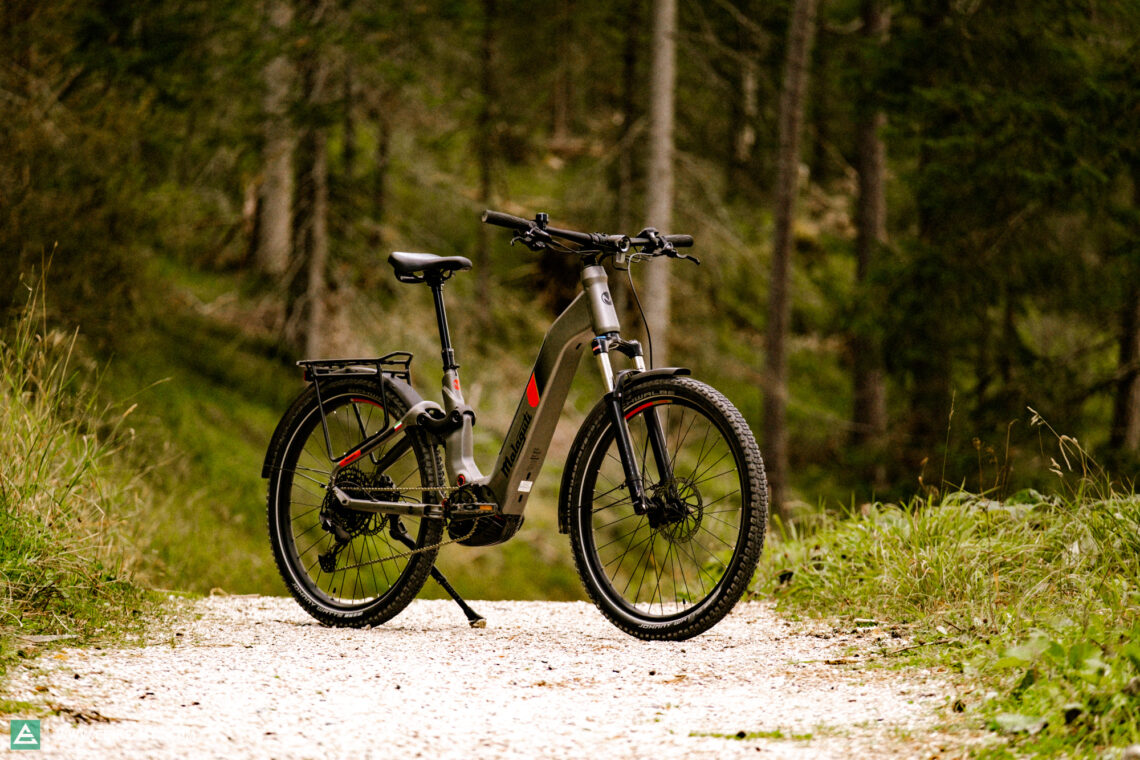
The Malaguti COLLINA FW6.0 stands out for its style and emotionality. The full-suspension off-road step-through bike with Italian motorsport history seeks to inspire with its design, but lags behind the competition in terms of functionality and rear end performance. Instead of a wide range of features and connectivity extras, it only offers minimalism and thus will probably only attract the aesthetes among ebikers. It is certainly not up to the various demands of an off-road adventure.
Victoria Parcours 5
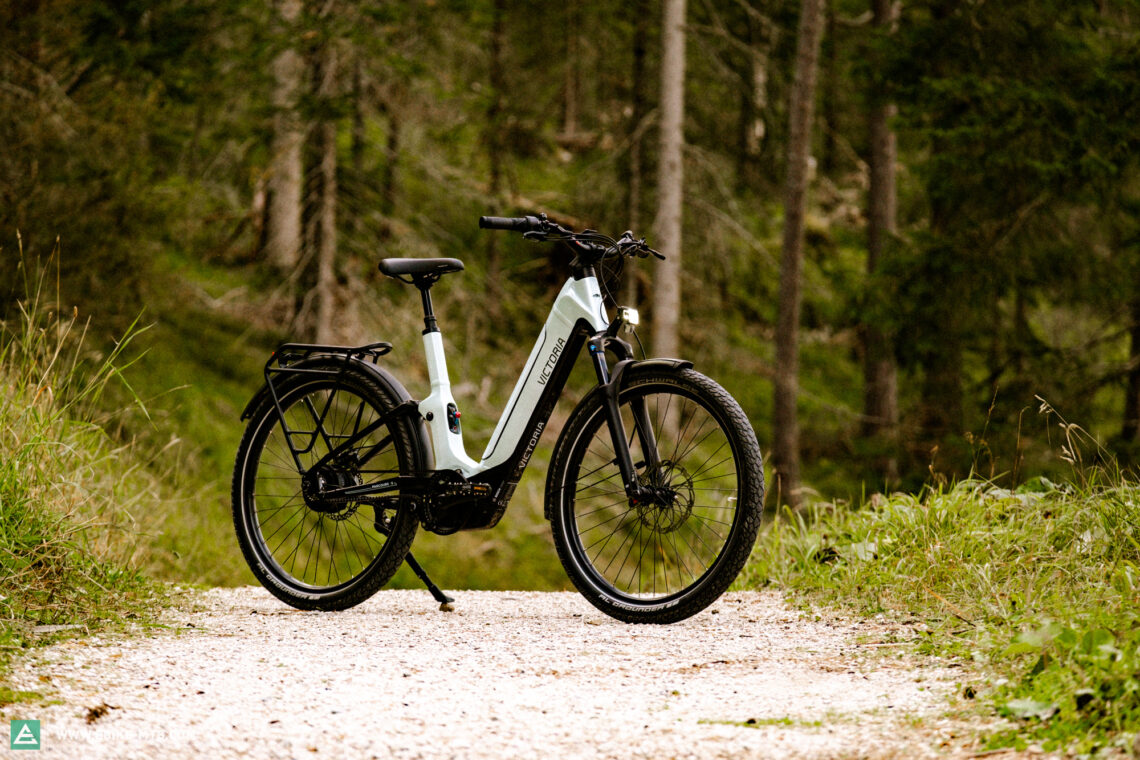
The elegant Victoria PARCOURS 5 comes with many features of an off-road step-through bike and, with its full-suspension chassis, is not only very comfortable but can take a hit when off-road. Next to the other off-road step-through bikes, it looks a little overdressed. The Victoria impresses with a consistent design language that fits better into a modern urban landscape than a rustic natural setting. The low range gear hub and the tires with a lower profile also make more sense in everyday commuting than on an off-road expedition, which is why the Victoria is the city bike among the off-road step-through bikes.
Did you enjoy this article? If so, we would be stoked if you decide to support us with a monthly contribution. By becoming a supporter of E-MOUNTAINBIKE, you will help secure a sustainable future for high-quality cycling journalism. Click here to learn more.
Words: Rudolf Fischer Photos: Mike Hunger, Julian Lemme









